
Dr Tammi Sinha
Academic and research departments
Surrey Business School, Centre for Business Analytics in Practice, Institute for Sustainability.About
Biography
Dr Sinha is a senior lecturer in operations management, an author, lean practitioner and pracademic from the University of Surrey. She has worked in the lean and improvement discipline from 1992 where she worked as an engineer within the manufacturing and business systems group responsible for blue sky technologies for the Eurofighter programme. Her passion for lean has evolved over the years to lead improvement communities of practice and embed lean principles within higher education, the public sector, health, wellbeing, and manufacturing. Developing lean six sigma programmes for University of Cambridge, Southampton, Winchester and Hampshire County Council contributing to the embedding of lean thinking and tools across these organisations. She is dedicated to linking sustainability to CI and previously held the position of Director for the centre for climate action and education at the University of Winchester, where she supported vice chancellor Prof Joy Carter and Prof Carole Parkes Advisor to the UN to embed sustainability across the Institution. Dr Sinha has written widely on improvement and has recently co-edited a book Balzer B and Sinha T (2024) “Hoshin Kanri in Higher Education: A guide to strategy development, deployment and management” Routledge. The book introduces HK and showcases impact in 10+ global Higher Education Institutions. Her knowledge exchange approach focuses on building capability for lean and sustainability across sectors through experiential learning, coaching kata, and improvement katas. She has a PhD in Operations Strategy, is a Senior Fellow of the Higher Education Academy, a LEGO ® Serious Play ® facilitator, and an advisor member to the Harmony Project (sustainability in education) and Hampshire Forum on Climate Change.
News
In the media
ResearchResearch interests
My research interests encompass systems thinking, lean and sustainability. My work aims to develop regenerative business approaches and models to enable organisations to move from a sustainable business approach (do no harm) to a regenerative approach (positive impact to the environment and society). I am also interested in 'serious play' within higher education and the impact approaches such as LEGO (r) serious play (r) have on the learning experience for executive, post grad and undergrad education.
Research interests
My research interests encompass systems thinking, lean and sustainability. My work aims to develop regenerative business approaches and models to enable organisations to move from a sustainable business approach (do no harm) to a regenerative approach (positive impact to the environment and society). I am also interested in 'serious play' within higher education and the impact approaches such as LEGO (r) serious play (r) have on the learning experience for executive, post grad and undergrad education.
Supervision
Postgraduate research supervision
Susanne Clarke - Kindness in Higher Education
Claire Lorrain - Continuous Improvement in higher education
Sustainable development goals
My research interests are related to the following:
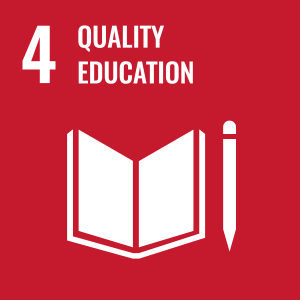
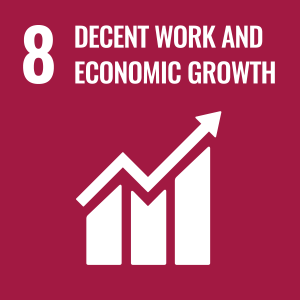


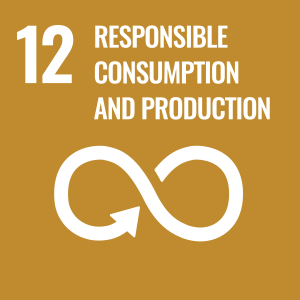
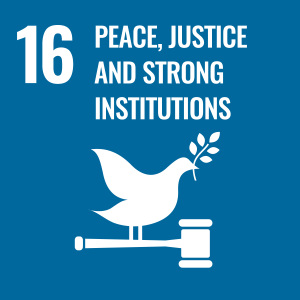
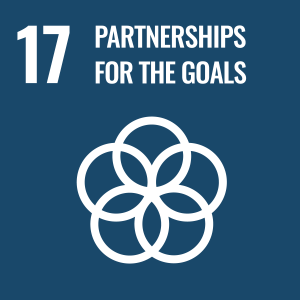
Publications
In the UK context, it is important to acknowledge that there are multiple change drivers in Higher Education Institutions (HEIs) that result in a proliferation of foci. Gornitzka (1999) and Allen (2003) suggest that the distinctiveness of governance, professional autonomy and the tradition of academic freedom in HEIs should be reflected in change processes, and therefore traditional frameworks for change could be adapted in an attempt to research and manage change. This paper explores how theoretical and practical tools for managing and researching change can be integrated in order to support change, whilst reflecting on the methods used. The journey of the authors towards the development of a holistic framework for researching and supporting change in Higher Education (HE), with a focus on two HEIs, is explored. The synergies of Lean Management (Wincel and Krull, 2013), Appreciative Inquiry (Cooperrider and Srivastva 1987), and Participatory Action Research (Greenwood et al, 1993) are examined through three stages of practice-based fieldwork to establish their positioning within a holistic tripartite framework for researching and supporting organizational change. The benefits and challenges of this framework are discussed with attention to the importance of future research to provide more evidence of the impact of this framework.
In ECRM 2018 17th European Conference on Research Methods in Business and Management (p. 366). Academic Conferences and publishing limited.
Strategy, the link between mission and operational plans to improve an institution’s performance, is a critical element to the future success of higher education (HE). Hoshin Kanri (HK), the application of Lean principles and practices to strategy development, deployment, and management, is a systematic and effective approach to support institutional success, particularly when competition is high. Surprisingly, despite its known effectiveness and advantages over other approaches to strategy development, deployment, and management, the application of HK in HE is limited.
Supply chain research might involve developing understanding of complex business situations. One way to do this is by using tools such as Lego to facilitate discussion. This chapter covers the LEGO® SERIOUS PLAY® (LSP) methods and materials and describes their use to develop a shared understanding in the establishment of a community project. The LSP approach has been around for 20 years (2000 – 2020) and is grounded in constructivism (Piaget, 1951), constructionism (Papert, 1986), flow (Csikszebtmihalyi, 1996), complex adaptive systems theory (Holland, 1995) and autopoietic organisational epistemology (von Krogh and Roos, 1995; Weick 2000). Through building models in response to challenges, using metaphors to explore complex situations, and to aim to uncover insights through storytelling, model making, active listening and reflection, it uses play and imagination to drive inquiry.
Communities of practice provide a focus for developing and nurturing capability and competences in many disciplines. In this chapter, we will explore how communities of practice enable change, primarily by building technical and interpersonal skills in a higher education environment. These skills, in turn, enable shifts in working practices and the initiation of projects, with the goal of transforming higher education institutions.
Additionally, we will explore ideas and activities in a roadmap format, addressing the complex and challenging aspects of climate change. You will find recommendations on how universities can challenge the existing norms and practices. To conclude, we’ll present key themes to guide higher education institutions (HEIs) in navigating these challenges.
This chapter brings together the disciplines of transformative education, tourism strategy development and performance, and role of tourism education to enrich and embed sustainability in our future tourism leaders. With a focus on the United Nations Sustainable Development Goals (UNSDG) 4 (Quality Education) and 13 (Climate Action) the author uses the PPP framework of strategic portfolios, programmes, and project management to present propositions of how to develop a framework to design strategic and transformative tourism futures. The 3Ps, namely, portfolios of work (strategies), programmes of work (Tertiary education), and individual projects (modules), enable us to develop and deliver strategies with a focus on sustainability, developing transformative curriculum, using good practice to enable ‘flow’, and developing governance themes to enable informed tourism strategy development. Bringing in the dimensions of transformative tourism education will ensure that all we leave behind as travellers/tourists ‘are footprints’. Treading lightly on the earth is a formula for tourism, tourism education, and transformative tourism education.
The earlier chapters showcased the application of Hoshin Kanri (HK) in higher education (HE), presented a broad-ranging set of case studies illustrating its application and impact in university settings, and offered suggestions for expanding the application of HK in HE. With its solid grounding in Lean's foundational pillars of continuous improvement and respect for people, HK provides the process and tools to help HE institutions develop, execute, and manage strategy and policies to better fulfill their missions of knowledge transmission, knowledge creation, and knowledge application and actively contribute to our communities and society. Both practice and research demonstrate that HK offers a proven and systematic approach for achieving strategic institutional improvements by engaging individuals, teams, departments, and functions that leverages the knowledge, expertise, and insights of all stakeholders to move organizations, including HE institutions, forward. As demonstrated in the case studies included in this book, each designed to acknowledge and reflect its unique history, mission, and focus, HK improved strategy development, deployment, and management to help these HE institutions align and achieve their multi-year strategic objectives, short-term annual objectives, and tactical goals, projects, and actions. We believe HK can contribute to the long-term success of HE and should be more widely considered, embraced, and implemented in the HE sector.
This chapter explores the opportunities and challenges of humanising higher education through sustainable development education and climate action. Using the framework of head, hand, heart (Devis-Rozental 2018) the premise of ‘Play with Purpose’ and the metaphor of the ‘Tree of Life’ (Sinha 2018), the chapter creates positive landscapes for change, bringing together contemporary theory and practice that provides guidance and inspiration for practitioners and academics working in this area, to be part of the community of practice of educators and professionals supporting, inspiring and challenging our future leaders and colleagues. We need to transform our HE system, and link it to positive change to protect our planet from further harm, in so doing give ourselves the best chance of a fulfilled and beautiful life.
“Lean” as a concept originated within the manufacturing sector, with Toyota an early pioneer, before a continuous improvement culture rippled across the public, health and well-being sectors and higher education.
The concept’s name originated from John Krafcik through his work with the MIT’s International Motor Vehicle Program from 1986 to 1990. He visited 20 countries and studied 90 manufacturing plants. His influential paper “Triumph of the lean production system” linked performance, corporate parenting and management philosophies. James Womack, Daniel Jones and Daniel Roos supercharged the concept in their 1991 book, The Machine that Changed the World, which presented the lean philosophies of respect for people, continuous improvement and the eradication of waste.
How can universities reduce stress for students during the application process
Greener life science labs: the challenge to save energy and reduce waste
Building futures: how estates directors can deliver net zero
We in the iSolutions continuous improvement (CI) team at the University of Southampton have been working hard to embed the core principles of this approach through lean thinking, leadership and toolkits. Projects to date have included improving the reference process for applicants, mobile-phone usage and carbon footprints, and developing awareness of sustainability in human resources and customer experience impact for welcome week and halls.
We are a small team within the university’s IT support service, iSolutions, and are part of the professional services community. Our ethos is to build capability for continuous improvement through our people, linking organisational excellence and sustainability and enabling individuals and teams to take a new look at “the way they do things around here” through workshops and projects.
How does our continuous improvement process work?
As lean practitioners, we follow a process called R-DMAIC.
Recognise: First, we recognise the opportunities for improvement in ways of working that no longer serve us.
Define: We choose our challenge and define the scope of our intervention.
Measures: We work through a series of tools that help us to understand what is working well and is not working, typically through a process map, measures and other tools.
Analyse: We analyse the current state to identify what is waste (anything that is not adding value to the end user), where we are overburdened and what we could change to improve the situation.
Improve: We create ideas to improve the current state and run experiments to test our solutions.
Control: When our experiments are successful, we embed the changes within the university, where we embed the gains through dashboards, reviews and celebrations.
Leadership or culture, figureheads or movements?
We take a “viral change” approach. That is, we are not implementing a lean programme that has central backing; we are not engaged in rapid improvement events and we are not leveraging budgets to drive transformational change. We also use strategic lean tools such as hoshin kanri (which is also called policy deployment) to link our improvement projects with university and department strategy.
We have seen charismatic leaders drive lean programmes through an organisation only to move on and leave their efforts to dissipate under the direction of the next charismatic leader. We don’t undervalue the impact that this approach can bring, but we found ourselves looking to improve on what we’d been a part of previously, pondering the difference between leadership and culture, between figureheads and movements.
Our approach was inspired by a lunchtime chat early in 2022 about how Covid had changed the way we delivered improvement workshops, and how MS Teams and Miro had allowed the same capability. Before the end of that week, we had co-opted three other local universities into plans for a “process palooza” conference (four days virtual and one day face-to-face).
These two experiences came together, and in July 2022 we started to design a programme of materials, workshops and one-to-one coaching sessions that would: empower people to change the way they did their day jobs and improve their workspaces; and encourage them to give themselves permission to step back and ask if this was what the customer wanted or what the planet needed.
Using experiential learning techniques to embed continuous improvement
We developed our approach to building continuous improvement/lean capability using experiential learning techniques. Our lean programme was open to all colleagues at the University of Southampton. We felt this was a good way of building capability and supporting the university.
Our one-day lean foundations workshop introduces colleagues to the concepts of lean and sustainability: respect for people, continuous improvement, eradication of waste and understanding the needs of the planet.
We show how lean and continuous improvement is applied in higher education, enabling colleagues to experience lean principles through hands-on activities. Workshops illustrate the viewpoints of customer, planet and provider.
We developed a Gemba game, where colleagues build five products associated with higher education, such as a final-year project, steps to success, nature and graduation using Lego blocks. This game enables colleagues to apply nested cycles of plan-do-check-act (PDCA) to improve their lead times, quality and teamwork.
Image
Using Lego Serious Play to teach continuous improvement
Photo courtesy of the University of Southampton
Our lean foundations workshop is accredited by the Lean Competency System, which is recognised as a global professional qualification. On completion of an online multiple-choice exam, colleagues can participate in the lean practitioner programme, which is a two-day workshop and a 12-week mentored continuous improvement project.
Our lean practitioner two-day workshop is based around the R-DMAIC cycle. The workshops have been developed with a clear experiential learning pedagogy in mind. Our colleagues can see what works for them and they can use all their senses in the training so they see it, they hear it and they do it.
We use visualisation, storytelling and action-based learning. This is also linked to the Kolb learning cycle, where we introduce the theories and provide opportunities for action and reflection linked to pragmatism. The workshops are designed to deliver deep learning. Approaches such as Lego Serious play allow colleagues to build models that tell the story of how lean is embedded within the university.
At the end of the two days, colleagues develop their own ideas for a continuous improvement project. Each colleague is appointed a mentor with whom they work over 10 to 12 weeks to develop a portfolio showing how they have applied this learning in their workplace, which is submitted to the CI team for review. The professional qualification of lean practitioner is then awarded if all learning outcomes have been met.
The team was shortlisted for the 2023 Lean Diamond Award linking lean to sustainability. It is wonderful to see how lean thinking and the toolkits are being applied across the university to help us on our mission to inspire excellence, achieve the remarkable and build an inclusive world.
Tammi Sinha, Pete Rykowski and Michael Shaw are members of the iSolutions continuous improvement team at the University of Southampton.
This chapter defines, explores and comments on service systems design, integration and implementation in a public sector context. Public sector service systems draw together many aspects of systems thinking, value co-creation, multiple stakeholders view of value, expectation management and scarcity of resources which is increasingly high on the agenda. The chapter expands these themes using the experiences of a team of Managers, clinicians, nurses and professional services in a case study, which documented the transition of separate contraception and sexual health (CASH) and genito-urinary medicine (GUM) into a newly commissioned ‘one stop’ service concept. The experiences of this team, provides a rich picture of the challenges in the
health and well-being sector, and explores implications for service operations in the redesign of service concepts, the integration of services and the needs of the professionals delivering that service. The work explored the views of health staff, when they were required to deliver a new model of service, which created a single specialist integrated sexual health service. This change had been initiated to transform services. The new service brought together staff from six organisations, and the disciplines of genitor-urinary medicine and contraception services. The model required clinical staff to have training in the skills of a related
specialism to their own, so that users have access to all sexual health services in one place, at one time and to be assessed by one clinician. The chapter concludes with implications for service design practice, value co-
creation and the management of stakeholders with multiple views.
This chapter explores the successes, barriers and key requisites for the introduction of a Higher Education Institution Lean Ambassadors Network using workshops and live projects. It deals with a summary of successes and key challenges, and summarizes the next steps for the launch of LeAN 2.0 in spirit of continuous improvement and Lean Learning. The Continuous Improvement Unit is a hub for operational excellence and improvement at the University. The evolution of Lean has seen the principles and approach through manufacturing to service, to the public sector and to higher education. The Excellence model is an industry standard, focusing on enablers for improvement which include leadership, people management, policy and strategy and resources, processes and the results. The workshop ended with opportunities for projects discussed and expectations set. Workshops are interspersed with ‘fieldwork’, enabling participants to build up their confidence, capability and experience in applying Lean principles in their sphere of influence, and gaining their Lean foundation and practitioner qualifications.
Our book has focused on the application of Hoshin Kanri (HK) in higher education (HE), drawing on experiences from many colleagues and institutions across the globe. The common themes bringing the HK body of knowledge together are strategy development and deployment; strategic initiatives; staff engagement; Catchball; visual management; plan do check act (PDCA); identifying performance gaps and targets for the future; and compelling stories. These themes provide us with the opportunity to share strategy development, deployment, and management in HE, and in any professional setting.
Contemporary challenges motivate academics to look for forms of activities stimulating creative processes, releasing creativity, and supporting cooperation between universities and their socio‑economic environments, including the expansion of knowledge with the active participation of these environments. Such effects are brought about by cooperation within the framework of a community of practice – a traditional form of academics’ organizing themselves that is currently being rediscovered. Research aims. A presentation and analysis of examples of informal academic cooperation in Poland and the United Kingdom. Methodology. A case study has been conducted on the basis of statements made by British and Polish researchers and practitioners involved in communities of practice. Key findings. The result of the conducted research is the identification of a theoretical basis necessary for understanding various types of voluntary cooperation within an academic community. The research results show that communities of practice are an effective way of working thanks to the stimulation of creative processes, academics’ individual development, and advantages gained by institutions. Their key strengths are the absence of formalization and the joy of creation. They constitute a renaissance of the traditional forms of work compatible with academics’ styles of living.
DOI: 10.4018/IJSS.2016070102
Operational Excellence (OE) is achieved when high performance teams are seeking for continuous improvement in well-designed processes, using appropriate tools and technologies. Excellence is underpinned by a philosophy in which problem-solving, team-working and effective leadership combine to focus upon customer needs, and all employees are empowered to act to maintain optimal flows of value. OE is clearly a desirable quality of organizations seeking both effectiveness and efficiency in their production of goods and services for customers. OE is underpinned by concepts such as team-working, effective leadership and change management, and depends upon effective flows of value. Systems Thinking (ST) is consequently at the heart of genuine excellence. This paper was conceived in the context of a Community of Practice of business improvement professionals, who took Operational Excellence as their agenda for inquiry during sessions in 2015. Reflection upon practice discussed at these meetings, together with the literature of change management and continuous improvement, have led to development of a systemic ‘landscape' model for pursuit of Operational Excellence. The elements of this model are set out, showing how they can contribute to OE.
Higher Education Institutions (HEIs) have had to change their delivery and ways of working at incredible speed. The disruptive innovation caused by the COVID-19 pandemic is having profound impacts on all stakeholders of HEIs. This study reports on the results of the project which has brought together 3 perspectives from Poland, the United Kingdom and Ukraine. The purpose was to evaluate and compare the performance of Universities during this period. Performance is understood as an assessment of support given by a University to its stakeholders in the following spheres: organisational, technical, technological, competency and social. This study will contribute to better understanding the context of value creation by Universities during the pandemic and post-pandemic period.
Hoshin Kanri (HK) is an approach to developing, deploying, and managing long-term strategic plans. This chapter provides a practical guide for these three phases of strategy as applied to higher education (HE). It provides a road map plus toolbox to enable senior leadership and their stakeholders to explore and apply HK in an HE setting. There are of course many variations across organizations and specifically HE institutions, acknowledging the importance of context (e.g., size, culture, and lean maturity) you may want to consider when adapting HK for your university.
Lean higher education (LHE), grounded in the principles of continuous improvement and respect for people, offers a comprehensive management system for higher education (HE) institutions to create value for those it serves, engage and develop employees, and enhance institutional efficiency and effectiveness (Balzer, 2020). A wide variety of LHE applications support the ongoing operations of the institution. For example, rapid improvement events (RIE) are conducted to remove waste and improve the flow of processes; structured problem-solving (SPS) offers a systematic approach to understanding, diagnosing, and solving problems; 5S establishes an organized and standardized workplace; total productive maintenance (TPM) trains employees to maintain the equipment they operate to reduce downtime, delays, and defects; and Lean in Daily Work (LDW) teaches day-to-day work practices where work teams take responsibility for managing and incrementally improving their work.
This paper provides an analysis of Value Stream Mapping (VSM) tools. It offers an insight into the benefits, enablers, drawbacks and blockers for VSM approaches with the expertise of a community of practice of 20 improvement professionals from service environments. A single scenario was used to test the methods in terms of visual representation, team understanding, team interaction and the richness of the data displayed. The results showed that each approach had value but that building complexity and adding richness of data improved the overall outcome. A framework and key messages conclude
Savings of an unprecedented level are required in a sector which is critical for care and employment to a large proportion of the population of the UK. A survey was circulated to stakeholders within the sector to identify the variety / volume of initiatives, which methodologies were prevalent and known, whether they believed that improvements were being embedded and sustained within their organisations and what in their view needs to change. The outcomes from the research provide a compelling illustration of improvement initiatives in the NHS. The NHS needs a period of stability, to implement principles of operational excellence.
This paper has documented the establishment of a Community of Practice of BusinessImprovement Professionals meeting in Business Schools within a particular region. It discusses theoretical ideas relating to the nature and activities of communities of practice.The potential to develop a community for engaged scholarship. The paper considers difficulties suggested by some authorities in pursuit of collaborative research between academics and practitioners, and looks at the idea of a community of inquiry as a means to support collaboration in co!creating, capturing and disseminating new knowledge, using a rigorous and dynamic data gathering protocol.
More with less... this is the challenge the public sector has to deal with as measures to tackle the national deficit become a reality. Lean principles suggest that instead of simply identifying and cutting out waste, we should be seeking new ways of adding value to the things we already do.
Despite emerging policy and guidance within UK HEIs to develop an entrepreneurial curriculum (Wilson, 2012; QAA, 2012; Witty, 2013; Young, 2014), it is recognised that enterprise and entrepreneurship education has patchy leadership within these institutions (Rae, Martin, Antcliff, Hannon, 2012) and empirical study of leadership of the entrepreneurial curriculum is under explored.
This paper discusses findings of an action based participative research project -‘Leadership Development for an Entrepreneurial Education: Building Futures' funded by the Leadership Foundation in Higher Education (LFHE). This was a collaborative project involving thirty five curriculum leaders from two participating case study universities, in five exploratory and developmental leadership workshops. It explores barriers, enablers, paradox and tensions present in the academic leadership of current and emergent Entrepreneurship Education leaders and offers a model of competencies of leadership, that aim to address the contradictory perspectives and build capability of entrepreneurship curriculum leaders.
Consumers and other stakeholders are increasingly interested in climate action. This influences choices about the purchase of materials, products and services at the individual and organisational level. The interest can combine with wider concerns about health and well-being, good working conditions and how products have been tested, to inform a customer's or buyer's choice criteria. In a business-to-business (B2B) context, an organisation's desire to take account of climate change within its brand positioning, to gain new contracts or keep current ones, and its ability to recruit appropriate talent, have gained in importance. This chapter looks at how core marketing concepts and tools can shape choices and consequent action, with the climate in mind. It looks beyond the core product or service and focuses on the creation and delivery of ‘value’, with reference to the climate and wider sustainability. Different elements of the marketing mix will be highlighted, such as ensuring a climate-responsible product offer, addressing how price and greenhouse gas (GHG) emissions are interrelated, and how to provide the benefits of online shopping while minimising negative impacts. It also addresses the importance of considering emissions associated with different communication methods, and the overarching requirement for your marketing strategy to address climate change. A case-study on marketing in a hotel context is included, along with Quick Wins and Further Resources. Combined with chapter 3 (Communication & Reporting), this chapter encourages engagement with customers to support their awareness and commitment to climate action, and to enable them to choose climate-friendly products and services. In doing so, this can help them address both their own requirements and those of wider society.